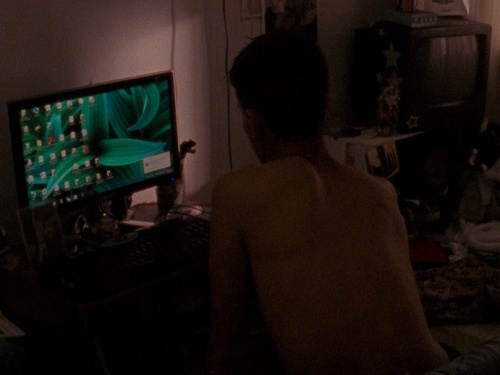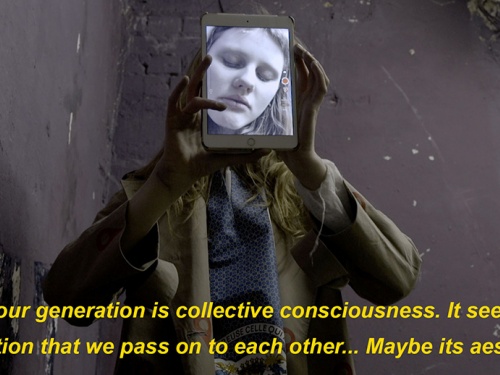Hand Gestures: An Interview with Francesco Clerici
Ahead of our screening of Hand Gestures, followed by a Q&A, Maya Caspari spoke to director Francesco Clerici about what inspired him to create the film and the process of making it.
What is the significance of the title Hand Gestures?
It is taken from a quote from the Italian sculptor Giacomo Manzù:
"Sculpture is not a concept. Sculpture is the hand gesture. In the gesture of the body lays the relationship with the world: the way you see it, the way you feel it, the way you own it."
The subject of the film is the ‘gestures’ that are behind the final work: all the artisans and the artist who gave form to the ephemeral steps of the process. At the same time 'hand gestures' obviously also evokes a communication form that is not spoken but gestural. This is how the transmission of this [craft] culture works: learning by observing gestures, without words, dialogues, lessons.
The film follows the process of creating one of Velasco Vitali’s famous dog sculptures, at Fonderia Artistica Battaglia in Milan. What first inspired you to make the film? What drew you to this artistic process and location in particular?
There's a Franz Kafka quote: "intellectual labour tears a man out of human society. A craft, leads him towards men."
The challenge—and my desire—was to pay homage to craft, trying to use cinema to narrate it in the most invisible and honest way. Fonderia Artistica Battaglia is one of the oldest artistic foundries still operating today and its walls, its dust, its atmosphere show these "time passages".
I met the artisans while working for Velasco Vitali. The silent way that they taught me all the steps in the lost wax-casting process was very intimate. I have worked with Velasco since 2009 and our working relationship has transformed into friendship. His way of finding technical solutions is incredible, as well as his technique and ability to use historical processes in the bronze sculptures, and also in his portraits, oil on canvas, engravings, watercolours… I think his dog sculpture is the best "McGuffin protagonist" I could have chosen: it changes its own glaze and shape and then when "born", it belongs to its "pack".
The film combines archival footage with shots capturing everyday life and work in the foundry. Why did you decide on this approach?
By the middle of the shooting process, I knew I wanted to include old archival footage. Yet, the more I shot, the more difficult the old footage was to find. At one point I gave up - I finished a second edit of the film with just my footage and I was ready to finalise it.
Then, they discovered a 19-minute, 16mm film reel in the same foundry. I went there and watched it. I was sure any film about the process would have shown the same gestures as those we see today, but I was even luckier: the archival footage was shot in the same foundry and some of the artisans in that film had taught those who work there today. I thought a lot about whether to use that material or not but when I tried editing it I thought it helped to create an "out-of-time" feeling, giving the spectators a unique experience that is not related just to today but to a flow of time that exists just inside the film.
There is no dialogue, voiceover or background music in the film. What was behind this choice? Were you influenced by any particular films—or filmmaking traditions—when making the documentary?
I was not thinking about any film while shooting. I was thinking about telling the story of the sculptors’ skills in the best way possible, trying to feel more like a spectator than a director and paying homage to the workers’ culture and deep dignity. I was just hypnotized by their work, their time, their hands, their way of dealing with simple elements like clay, water, fire, air.
But I've always liked the directors that used a very ‘pure cinema’ approach, very visual: Nikolaus Geyrhalter for example (especially Our Daily Bread and Abendland), and even more the Italian master Vittorio De Seta—unfortunately not very famous abroad—who made some incredibly beautiful short documentaries in the fifties, most of them in Sicily, with almost no dialogue, focused on fishermen, farmers, mine workers (especially: Lu tempo di li disci spata 1954, Sulfurara 1955, Contadini del mare 1955 and Parabola d'oro 1955).
Which projects will you be working on next? Do you plan to keep working in the documentary genre or do you hope to explore other forms of filmmaking?
Me and Jon Barrenechea, who executive produced and helped me with this film, are working on a documentary which again pays homage to manual work but also to cinema, an on-the-road film in which the protagonists are the cinema-seats…! And I'd like to do something smaller, a medium-length film in Milan with just me and the guys who made the audio in Hand Gestures.
I'm not interested in doing fiction at the moment, and I don't think I'll ever be. But, as Muhammad Ali would say: "impossible is temporary. Impossible is nothing." ■
Hand Gestures is screened on 21 November, followed by a Q&A with director Francesco Clerici and artist Velasco Vitali.
This article is posted in: Blog, Film, Interviews
Tagged with: Hand Gestures, Francesco Clerici, Velasco Vitali, Sculpture, Maya Caspari, Film, Cinema, Documentary Film, Documentary, events








